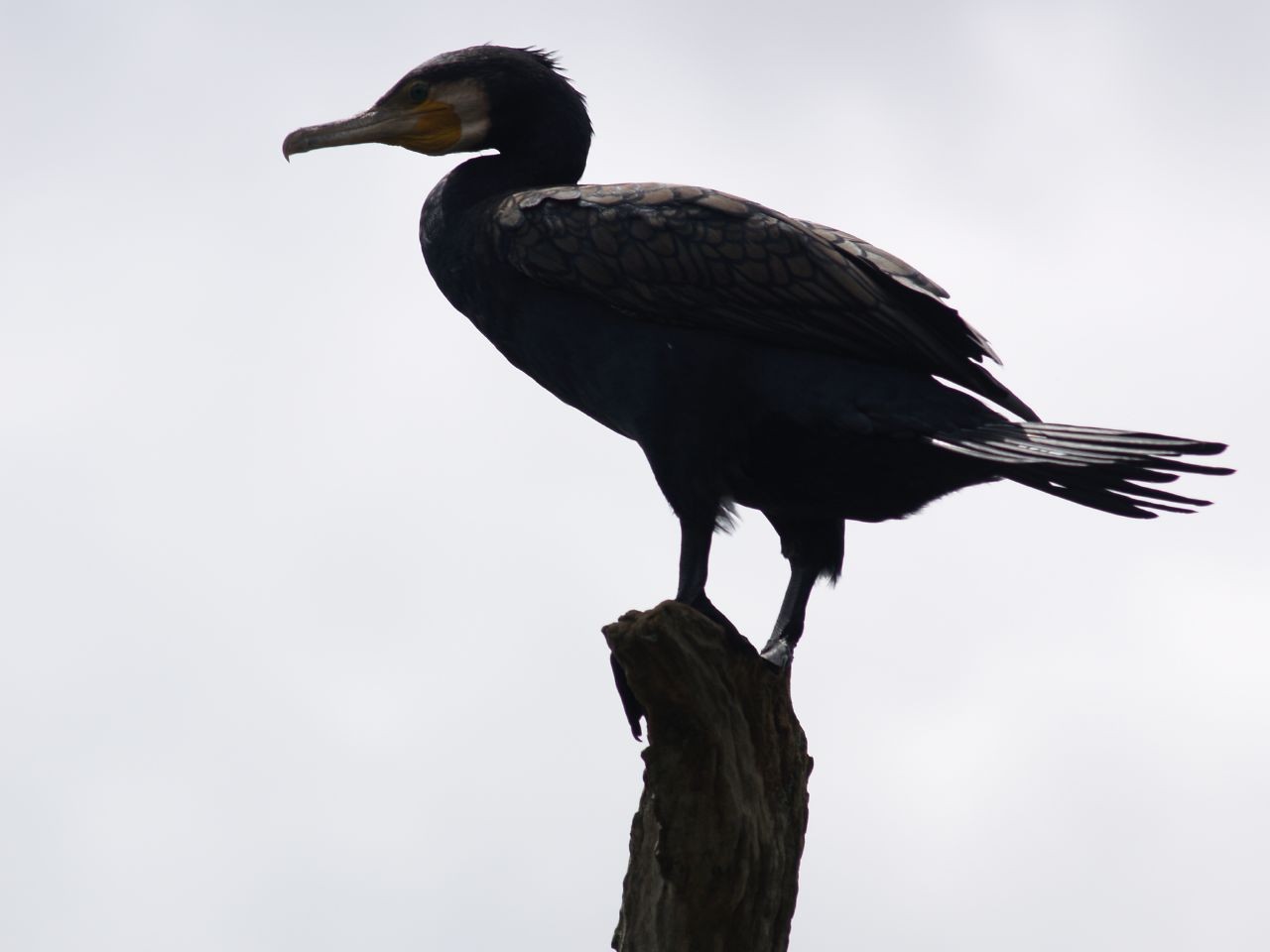Great Cormorant
A species of Typical Cormorants and Shags, Also known as Common Cormorant Scientific name : Phalacrocorax carbo Genus : Typical Cormorants and Shags
Great Cormorant, A species of Typical Cormorants and Shags
Also known as:
Common Cormorant
Botanical name: Phalacrocorax carbo
Genus: Typical Cormorants and Shags
Content
Description People often ask General Info
Description
The great Cormorant is a charismatic bird known for its diving abilities and fishing prowess. It has a glossy black plumage, a long neck, and a hooked beak. It is strong swimmers and divers, capable of reaching depths up to 30 feet to catch fish. It has a unique habit of spreading their wings in the sun to dry them after fishing, helping to maintain their waterproof feathers. 
Size
84 - 90 cm
Life Expectancy
15-22 years
Nest Placement
Cliff
Clutch Size
1 - 7 eggs
Feeding Habits
Great Cormorant predominantly consumes bottom-dwelling fish, extracting them with heavy, hooked bills from crevices. Great Cormorant dives from the surface and swims using feet, maneuvering with feet and tail, often in shallow waters but can reach depths over 100 feet. Diet includes sculpins, pollock, flatfishes, and occasionally crustaceans. Prey size varies, with heavier fish in colder temperatures. Efficient foragers, great Cormorant may only need to feed for 20 minutes daily in summer.
Habitat
Great Cormorant thrives in various aquatic environments, from temperate to tropical climates. They prefer marine and freshwater settings—coastal zones, estuaries, and inland waters like lakes and rivers. Ideal habitats feature low altitudes with mild conditions, and for breeding, secluded rocky coasts, islands, or cliffs are sought to minimize disturbance and predator threats. Outside the breeding season, great Cormorant is found perching on natural or artificial structures near water.
Nest Behavior
Great Cormorant males choose nesting sites and provide materials for females to construct the nests. They exhibit colonial nesting habits, with egg-laying and biparental care following nest construction.
Nest Characteristics
Great Cormorant nests are mounds of marine algae and sticks, averaging 19 inches across and 8.8 inches high, found on flat ground of rocky islands, cliffs, trees, or man-made structures, often just a few feet apart in colonial settings.
Dite type
Piscivorous
People often ask
General Info
Feeding Habits
Bird food type
Sounds
Call
Recording location: Belgium
Call
Recording location: Belgium
Call
Recording location: Belgium
Behavior
Great Cormorant exhibit a tranquil demeanor, spending much of their day perched outside the water, engaging in preening and resting. They forage by diving and swimming underwater, emerging to dry their non-waterproof feathers, often holding out their wings. Their territories are minimal, centered on their nests, where males allure mates with unique displays, including wing-raising and showing off distinct flank patches. Females reciprocate with intricate courtship behaviors. Monogamous tendencies prevail, yet instances of extrapair mating are noted, particularly in European groups. Paired great Cormorant defend their nest vigorously with distinct posturing and 'nest worrying' gestures, shaking vegetation as a deterrent. Both sexes contribute to offspring rearing, with some pairs reuniting for subsequent seasons.
Distribution Area
In Serbia, the cormorant lives in Vøjvodìñâ. However, after 1945 many artificial lakes were formed in Serbia; some of them became potential habitats for cormorants. Currently, on the Lake Ćelije, formed in 1980, there is a resident colony of cormorants, who nest there and are present throughout the year, except January–February 1985 and February 2012 when the lake surface was completely frozen. 
